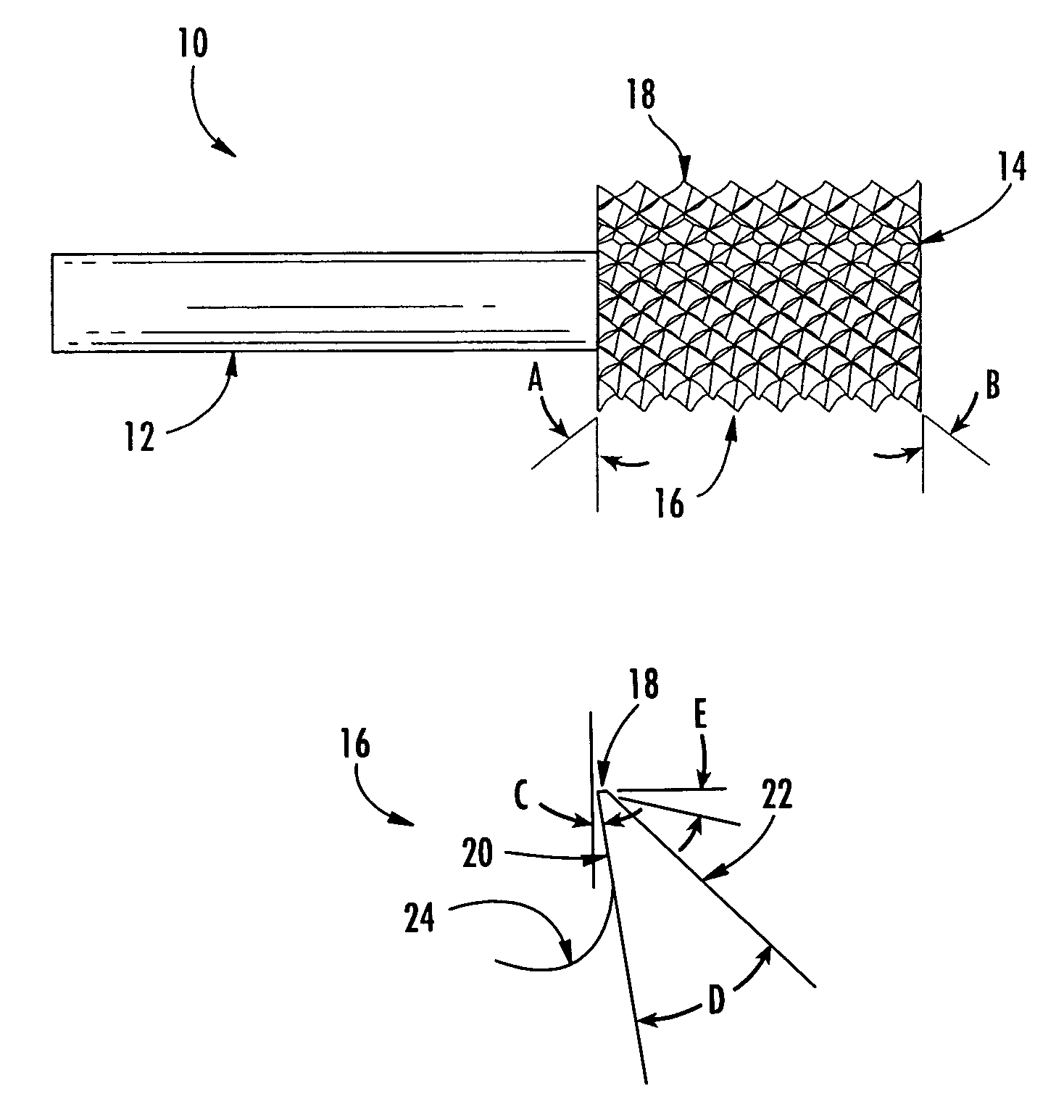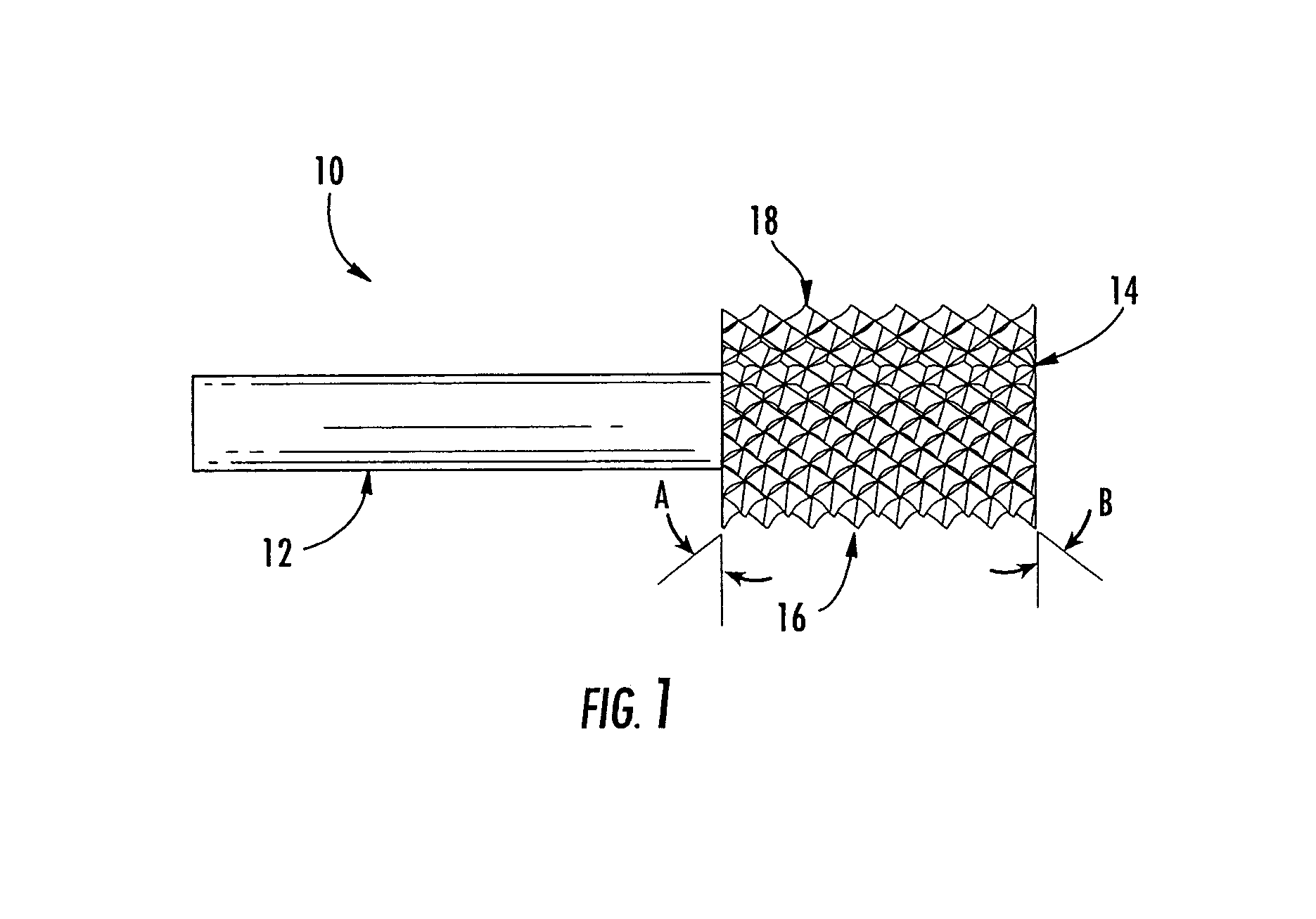Shaper router and method
a router and router technology, applied in the field of routing, can solve the problems of poor surface finish and chattering, typical carbide or high-speed steel tools do not produce a desirable surface finish, and the cutters and carbide and steels are easy to dull, so as to reduce the production time, improve the surface finish, and reduce the delamination
- Summary
- Abstract
- Description
- Claims
- Application Information
AI Technical Summary
Benefits of technology
Problems solved by technology
Method used
Image
Examples
Embodiment Construction
[0025]The present invention now will be described more fully hereinafter with reference to the accompanying drawings, in which some, but not all embodiments of the invention are shown. Indeed, this invention may be embodied in many different forms and should not be construed as limited to the embodiments set forth herein; rather, these embodiments are provided so that this disclosure will be thorough and complete, and will fully convey the scope of the invention to those skilled in the art. Like numbers refer to like elements throughout.
[0026]Referring now to the drawings and, in particular, to FIG. 1, there is shown a router 10 according to one embodiment of the present invention. The term “router” is not meant to be limiting, and it is understood that the router 10 could by any rotary tool for cutting, trimming, shaping, or forming a variety of patterns, grooves, shapes or holes in a workpiece such as a laminated composite material. Thus, terms such as cutter, milling cutter, or t...
PUM
 Login to View More
Login to View More Abstract
Description
Claims
Application Information
 Login to View More
Login to View More - R&D
- Intellectual Property
- Life Sciences
- Materials
- Tech Scout
- Unparalleled Data Quality
- Higher Quality Content
- 60% Fewer Hallucinations
Browse by: Latest US Patents, China's latest patents, Technical Efficacy Thesaurus, Application Domain, Technology Topic, Popular Technical Reports.
© 2025 PatSnap. All rights reserved.Legal|Privacy policy|Modern Slavery Act Transparency Statement|Sitemap|About US| Contact US: help@patsnap.com



